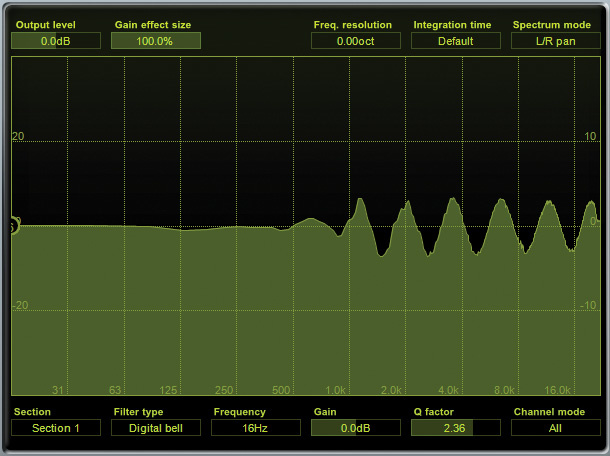
A lovely kick-drum sound here: plenty of 50Hz weight, but not without well-judged doses of 90Hz ‘chest punch’ and 180Hz warmth, and an envelope as spiky as it is tightly damped. Even better, though, is the programming of the acid-style bass riff that dramatically hops into the spotlight for the first time at 1:15. Not only is the note and pitch-bend programming first-class, and indeed more nuanced than it might at first appear (check out the fracturing of the line at 3:00-3:13, for instance), producer Calvin Harris has also introduced a great deal of ear-catching tonal variety. So the synth’s stereo image and HF bandwidth both contract at 1:30, leaving more space for the vocal, and then the low-pass filtering kicks in further at 1:45 to accommodate the acoustic guitars. When the 1:15 timbre recurs at 2:45, however, the subsequent section moves towards greater harmonic richness, via distortion processing at a guess. And let’s not forget the pure TB303 nostalgia of the little fills between these sections, either!
As a bonus for backroom geeks like me, the bass tone at 1:15/2:45 also provides an excellent commercial example of EQ-based stereo widening. This technique is typically implemented by feeding a mono signal into both sides of a stereo 32-band graphic EQ. Each third-octave EQ band is then set to boost in one channel while cutting in the other, effectively panning that frequency slice hard to the boosted side, and an alternating left-right panning pattern is then followed all the way up the spectrum to give an even-sounding spread. You can see this panning pattern in action on this screenshot of the L/R spectral panning display from Toneboosters’ affordable TB Equalizer plug-in:

Although this stereo effect tends to be a bit more subtle than you get with more common methods based around delays and/or pitch-shifting, the big advantage of EQ-based widening is that it doesn’t punish you with phase-cancellation or chorusing if the left and right channels are summed — in other words, it has nigh-on perfect mono-compatibility.
Although you can implement EQ-based widening in other ways, examining the panning of the spectrum using the stereo analyser in ToneBoosters TB_Equalizer plug-in reveals that it’s almost certainly the classic implementation that we’re witnessing here — you can clearly see equally spaced peaks and troughs on the read-out’s logarithmic Hertz scale. In addition, though, you’ll notice that the spectral panning effect is only active above about 300Hz, a common real-world refinement that makes a lot of sense in the context of any music reliant on powerful bass transmission. The crux of the matter is that sharing your low frequencies equally between both speakers gets the best bass power out of stereo playback systems, and low frequencies don’t provide many directional cues from a perceptual point of view anyway.
A couple of other things hit me too. Lovely little ping-pong delay spins at 0:15-0:30 and 1:50-2:00, for example. The vocal manipulation at 2:45-3:14 is also great, making a virtue out of severe amplitude modulations to exploit the contrasts available from duration and envelope shape of the little vocal bursts – for example if you compare the sound at 2:45 to that at 2:51.
The hard-panned double-tracked acoustic guitar part that gets added in at 1:45 is also worthy of note. Ask yourself whether you’d ever voluntarily have acoustic guitars sounding like that. I certainly wouldn’t – they’re curiously soft and spongey tonally, yet with obvious pick noise. However, that’s not to say that they’re not right for this mix, because I think a more assertive and solid acoustic guitar sound would probably have given the arrangement too much energy too early, which is a considerable issue when you’re trying to create really long build-ups as in this song.










